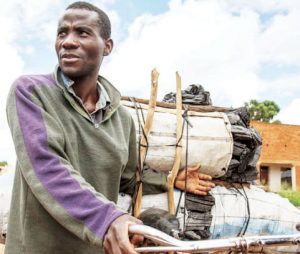

By Dyson Mthawanji:
Malawi has committed to achieving ‘Sustainable Energy for All’ as espoused in Sustainable Development Goal (SDG) Number Seven.
Energy provides a platform for social and economic development and serves as a pathway for achieving other SDGs.
The Malawi Growth and Development Strategy III recognises the central role of energy, citing it as “the lifeblood of the economy”.
Inadequate energy supply is one of the major problems confronting Malawi and limiting its social, economic and industrial development.
Electricity demand has been growing consistently at six to eight percent per annum. The demand is being intensified by urbanisation, economic development, population growth and rural electrification.
Just slightly over 10 percent of the country’s 18 million people are connected to the national grid.
Current rates of electricity generation, against the annual population growth rate of 2.8 percent, mean the country remains in dire need of the energy.
Many Malawians use biomass —firewood, charcoal and crop residues— as fuel.
However, these result in indoor air pollution, which causes severe human health problems directly to the users, especially women in rural areas.
Moreover, the task of gathering traditional supplies of fuel wood is time-consuming and exhausting.
The burden is largely borne by women and children, who are then diverted from other activities, such as education and farming, that could eventually have improved their productivity and living conditions.
As the demand for energy keeps increasing, the need for consumer awareness and dialogue on alternative energy resources becomes more pronounced.
The National Energy Policy recognises that the full potential of the country’s energy resources is far from being realised and that we need more creative measures to promote greater access to modern sources of energy, efficient conversion technologies and end-use appliances.
There are a number of alternative energy sources that Malawi can adopt. One of them is liquefied petroleum gas (LPG). Gas is as popular in other countries, as is electricity in Malawi.
On adoption of gas, Malawi has a good starting point since the country has LPG on the market and biogas is not new to some homes and institutions.
Gas exploration could be part of the solution to the current energy deficit. Indeed, while waiting for the country’s resources to be exploited, one needs to look across neighbouring countries such as Mozambique and Tanzania, where natural gas is now commercially available.
The main uses of natural gas would include cooking, power generation, transportation and nitrogenous fertiliser production.
More than 90 percent of Malawians use biomass energy —firewood or charcoal— to meet their basic household energy needs. This can lead to a doomed future for the environment.
Three factors underpin the large and growing reliance on charcoal in urban Malawi. The first factor is cost, whether real or perceived. There is a belief that charcoal is a less expensive household cooking fuel compared to electricity.
The second factor is availability and reliability since, with charcoal, there is no equivalent of power outages or load-shedding.
The third factor is preference where, in some cases, it (preference) has been indicated as a reason that urban households cook using charcoal.
In the absence of viable and alternative household cooking fuels, Malawi’s urban population will not have other options than charcoal or firewood.
Within this context, if LPG evolves as a cost-competitive and reliable alternative household cooking fuel, there would be potential for LPG adoption to decrease consumption of charcoal which, over time, would result in decreased charcoal demand.
A number of African countries have made strides in promoting LPG. For instance, Senegal has an adoption rate of 27 percent.
Literature shows that many countries share common barriers to adoption of LPG in sub-Saharan Africa in the areas of low affordability, accessibility, availability and awareness.
Relatively high initial costs of the cooking appliance and gas cylinder, along with the cost of the gas, undermine affordability, especially among low-income households.
Limited availability, storage, distribution and cylinder filling and retail capacity as well as import-related vulnerabilities often undermine accessibility.
Many countries also face poor awareness of LPG as a viable, clean and affordable alternative fuel. The Malawi Energy Regulatory Authority (Mera) recently urged journalists to up their game in reporting on the benefits of using gas as an alternative energy source.
The energy regulator also said it eyes an increased uptake of gas by three percent by 2023 from the current one percent.
Mera’s figures show that 70 percent of gas is used by commercial users, with the remaining 30 percent being utilised by domestic customers.
LPG— known in some countries as propane, butane, bottled gas or cooking gas— is a clean burning and efficient cooking fuel used by almost three billion people globally. It has long been an inspiring fuel choice for many urban and rural poor.
To promote gas adoption, stakeholders should join hands.
Countries that have deliberate government incentives including loans, tax and related fiscal incentives, subsidies and instalments payment systems, have generally achieved higher rates of LPG adoption.
Countries with high urban populations (that facilitate LPG distribution and adoption speed) have also tended to have higher LPG adoption.
It is also important to note that there are many misconceptions surrounding the use of gas which need to be cleared. This calls for concerted efforts.
Source: The Daily Times, Thursday, May 27, 2021_Feature_by Dyson Mthawanji
